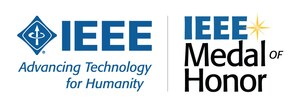IEEE Experts Say Existing Intelligent Transportation Technologies Could Eliminate 90 Percent of Traffic Accidents
Within 20 Years Intelligent Transportation Technologies Will Significantly Change How Societies Travel and Use Energy, Predict IEEE Experts
PISCATAWAY, N.J., Oct. 17, 2011 /PRNewswire/ -- Nearly every traffic accident caused by driver error – up to 90 percent of all crashes – could be eliminated if existing intelligent transportation technologies were implemented in our vehicles and roads, say experts at IEEE, the world's largest technical professional association. These include electronics and computing technologies such as in-vehicle machine vision and sensors to detect drowsy drivers, lane departure warning systems, and vehicle-to-vehicle and vehicle-to-infrastructure communications for safety applications. However, costs of such technologies need to continue to fall so the average consumer can afford these vehicle safety features.
"Today's advanced embedded systems, sensors, microprocessors and control technologies have made our vehicles and roads significantly safer, but integrating them into our vehicles and roads has been a slow process," said Dr. Azim Eskandarian, IEEE member and director of the Center for Intelligent Systems Research at The George Washington University. "However, within 10 years, as technology costs continue to fall and implementation of these technologies increases, we could see significant improvements in vehicle safety, efficiency, and energy conservation – especially in developing parts of the world where high-end cars are not yet affordable by the general public."
Dr. Eskandarian says other challenges include market acceptance and potential liability concerns surrounding technologies that take total or partial control of the vehicle, such as collision avoidance and driver assistance programs like automatic braking. However, these technologies may follow the path of driver- and passenger-side airbags and anti-lock braking systems (ABS) or electronic stability control (ESC), initially offered as optional features but today considered proven and often standard safety measures in nearly all vehicles.
Advanced research on safety technologies is going far beyond individual vehicles. For example, Teruo Higashino, IEEE Senior Member and professor of information networking at Osaka University in Japan, has focused recently on applying wireless networking technology for vehicle-to-vehicle communication to help detect dangerous vehicles on the road – such as a car approaching a blind intersection – and warn nearby drivers, helping dramatically reduce accidents. Many of these ground-breaking innovations, including vehicle-to-vehicle communication, were discussed at the recently held IEEE ITS Conference in Washington D.C.
Dr. Alberto Broggi, President of the IEEE Intelligent Transportation Systems Society and professor at the Universita di Parma in Italy, says intelligent transportation technologies on the horizon, including autonomously-driven vehicles, will forever change our concept of car use. Broggi recently coordinated the successful 13,000 kilometer journey of a driverless van from Italy to China. "These types of self-driven vehicles will be ready for use in non-urban environments within five to eight years," said Broggi. "The same technology will also apply to agricultural equipment, including self-driven tractors and combines that will maximize land use, increase crop output and decrease injuries."
Another expected benefit of intelligent transportation technologies is reduced fuel consumption and emissions. IEEE Senior Member Matt Barth, at the Center for Environmental Research and Technology at University of California-Riverside, predicts that fuel use and vehicle emissions can be reduced by 20 to 30 percent worldwide over the next five years using environmentally-friendly ITS technology such as "eco-routing." This vehicle GPS system capability will allow drivers to select destination routes according to fuel efficiency.
"Many governments are establishing new emissions and fuel efficiency standards for vehicle manufacturers to meet in the next ten years," Barth said. "The integration of ECO-ITS technologies – such as eco-routing into our vehicles – will be an important evolution in further reducing carbon emissions, achieving greater fuel efficiency, and strengthening energy independence."
Kyongsu Yi, IEEE member and director of the Vehicle Dynamics and Control Laboratory at Seoul National University in South Korea, said the application of intelligent transportation technologies varies by setting. "There's much more of a focus on traffic management systems for pedestrian protection in countries in Europe and Asia where cities were traditionally designed around a relatively small and defined city center," Yi said. "In contrast, in the United States where there are more sprawling open spaces, the emphasis is on vehicle safety systems to prevent roll-overs or collisions with other fast-moving vehicles."
Additional IEEE resources and multimedia content on intelligent transportation systems include:
- IEEE Spectrum article on a recent affordable innovation in long-distance car radar - http://spectrum.ieee.org/green-tech/advanced-cars/longdistance-car-radar/
- IEEE Spectrum article on Ford's Curve Control Technology - http://spectrum.ieee.org/green-tech/advanced-cars/ford-takes-control-of-tight-curves
- Video from U.S. Department of Transportation on vehicle-to-vehicle communication safety systems - http://www.its.dot.gov/library/media/v2v_video.htm
- ITS World Congress, focusing on "Keeping the Economy Moving" - http://www.itsworldcongress.org/
For more information on IEEE, or to speak with a member about intelligent transportation systems, please contact: [email protected].
About IEEE
IEEE, the world's largest technical professional association, is dedicated to advancing technology for the benefit of humanity. Through its highly cited publications, conferences, technology standards, and professional and educational activities, IEEE is the trusted voice on a wide variety of areas ranging from aerospace systems, computers and telecommunications to biomedical engineering, electric power and consumer electronics. Learn more: http://www.ieee.org.
SOURCE IEEE
WANT YOUR COMPANY'S NEWS FEATURED ON PRNEWSWIRE.COM?
Newsrooms &
Influencers
Digital Media
Outlets
Journalists
Opted In






Share this article